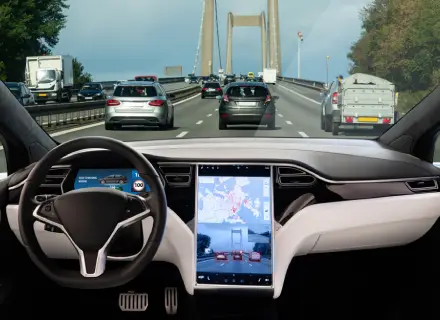Beijing, the capital of China, has now enacted new rules to promote autonomous driving technology in the city. The city’s authorities intend to eventually permit driverless taxis and public buses.
According to the state-sponsored Beijing Daily newspaper, autonomous cars that pass safety evaluations and road testing will be eligible to apply for road trials. The new rules will go into effect on April 2025. The city earlier stated that it was in favour of autonomous vehicles for private automobiles, urban buses, trams, and taxis, and it hopes to promote the development of intelligent road infrastructure to facilitate these modes of transportation.
Wuhan, a city in central China, also announced in a separate notice released that it had authorised rules to encourage the development of intelligent connected vehicles. At least 19 cities are testing robotaxis and robobuses as part of China’s aggressive approval of self-driving technology trials, according to a Reuters report from August.
Apollo Go, a division of the tech behemoth Baidu, is one of the companies with sizable fleets of robotaxis in operation in China. By the end of 2024, the company intends to have 1,000 robotaxis in Wuhan. Having gone public in the United States market in November, Pony Dot AI intends to increase the number of its robotaxis from 250 this year to over 1,000 by 2026. Other companies, such as WeRide, AutoX, and SAIC Motor, are investigating robotaxi prospects in the largest automobile market globally.
The governments of several major cities in China’s affluent Guangdong province announced on December 27 about concluding a mutual recognition agreement of permissions to test self-driving vehicles, thereby marking a big step forward in the development and adoption of autonomous vehicles in the region. The move will allow companies to test their robocars on public roads in the districts of Qianhai and Bao’an in Shenzhen, the Nansha district of Guangzhou, and Hengqin island in Zhuhai, once they get a permit from any of the local governments.
Hong Kong and Macau’s special administrative regions are also expected to join the agreement, as part of a broader goal to establish China’s biggest area for self-driving car tests in the Greater Bay Area, which includes Guangdong, Hong Kong, and Macau. Several Chinese companies have become the first beneficiaries of the effort, including Pony.ai, a Nasdaq-listed robotaxi developer, as well as Apollo Go.
Pony.ai reportedly operates around 250 robotaxis in a combined area of 2,000 square kilometres (772 square miles) in China’s four top-tier cities, which include Beijing and Shanghai, while having set up 3,000 pick-up and drop-off points in Guangzhou and Shenzhen.


